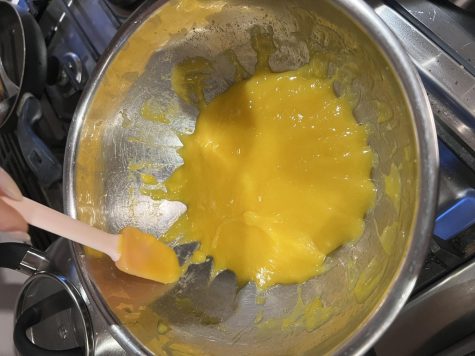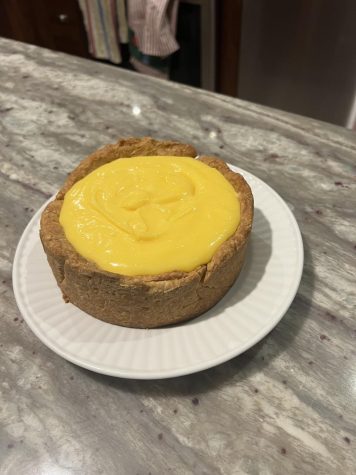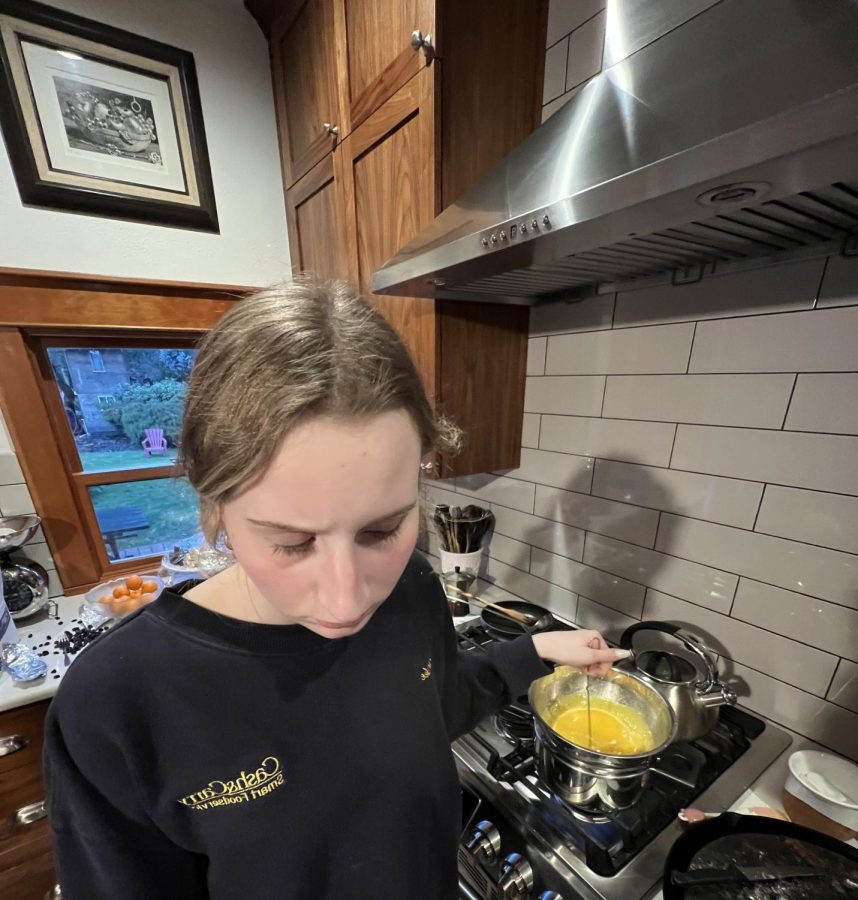Slight Fail: Making a Lemon Curd Tart
My sister is the baker of the family. She also happened to recently have a birthday. And since the birthday girl does not make her own birthday dessert, I, the very novice baker, was tasked with making it.
While I’m not anywhere near as proficient in baking as my sister, I have made quite a few things in the past. I was confident enough in my skills and excited to take on the challenge.
What happened.
The first thing that I needed to do, of course, was find a recipe—a small action that eventually caused all the problems.
My first failure: I had never made a “curd”. I didn’t know what I was looking for, so, like any seriously amateur baker, I chose one that seemed to use a good amount of eggs without checking the rest of the recipe.
The first step in the recipe was to make the crust. I gathered the ingredients and followed the recipe to a T, except when it came to blending the crust dough. The recipe called for a food processor, but all I had on hand was a smoothie blender. Smoothies are delightful, so I went with it: into the blender went the flour, sugar, and butter.
As it turns out, there is a fundamental difference between a food processor and a smoothie blender. Fail Two.
So after the whole smoothie blender ordeal, I made the dough by hand, an exhausting and miserable process, but the crust was finally done.
After refrigerating the crust for about 30 minutes, I had to roll it out to fit into the tart pan. The rolling process was practically flawless until I had to start all over again because the dough formed a huge crack as I was putting it in the pan.
While baking it, the recipe mentioned using baking beans or stones to keep the center of the crust from forming a hill. It did not mention placing parchment paper under these stones or poking holes in the crust with a fork so air could escape.
As it turns out, the stones will stick to the crust without parchment paper. And that’s just what they did. When I asked my sister to check on the crust, to her surprise, she found exactly that and it was not supposed to be there.

At this point, I was scared it would have to be redone. Luckily, being the experienced baker she is, she told me it would all work out by just poking holes in the crust at that moment. And she assured me that the baking stones directly on the crust wouldn’t affect it too much, so long as they were clean.
While the crust was baking, I had to start on the main part, the lemon curd. The first recipe called for me to put egg yolks with cornstarch in one bowl and a water/sugar/lemon mixture over heat in a pan. The yolks and cornstarch are the source of a curd’s thickness and creaminess, so I was both baffled and worried when I put the yolk/cornstarch mixture into the one already over the heat and it didn’t thicken.
My sister was confused when I said that I had put water in the curd. But I assured her it was ok. After all, I had also put a cup and a half of cornstarch.
Despite my confidence, she continued to gape at me. The recipe called for a fourth of a cup. The curd was about to become a crunchy, egg scramble, not a creamy lemon treat. Not only had I seriously messed up, but that was the moment I realized that the recipe was definitely not working for me. Fail Three.
At this point, I decided to find a new recipe and start the curd over.
Thank the maker, the new recipe didn’t require water or cornstarch.
But it did require an abundant amount of whisking. All the ingredients needed to be put in a bowl which was then over a pot of boiling water, a very French cooking and baking method called “bain-marie”.
I thought I was about to become a very fancy baker using a French method, instead all I felt was pain in my arm from whisking (probably excessively) for 20 minutes. The curd finally became its beloved creamy and thick consistency and I took it off the heat, added some butter (which required even more whisking–yay me), and placed it into the freezer to cool down along with the now fully baked crust. Fortunately I knew enough about baking to know that lemon curd tarts had to be cool before assembling!

After waiting 30 minutes for the curd and crust to cool, I emptied the curd from its bowl into the crust and placed the completed lemon tart into the fridge for even more cooling.
About two hours later my family and I tried the tart.
Although the crust wasn’t fully cooked because, looking back, I had made it a tad too thick, the lemon curd was delicious. Slightly a little runny due to the short cooling time, but the flavor was spectacular.

In the end, my sister was happy that she had some type of dessert and I was left with many life lessons.
Lessons learned.
- If you commission someone to make you a birthday cake, make sure they can bake it.
- The recipe for success is the actual recipe. Or for life in general, the plan that you devise for the task or goal at hand.
- If given instructions, follow them completely — shortcuts tend to lead down a much windier road.
- Failing is ok, what matters is if you try again.
- It’s important to try your best, the thought is truly what counts.









